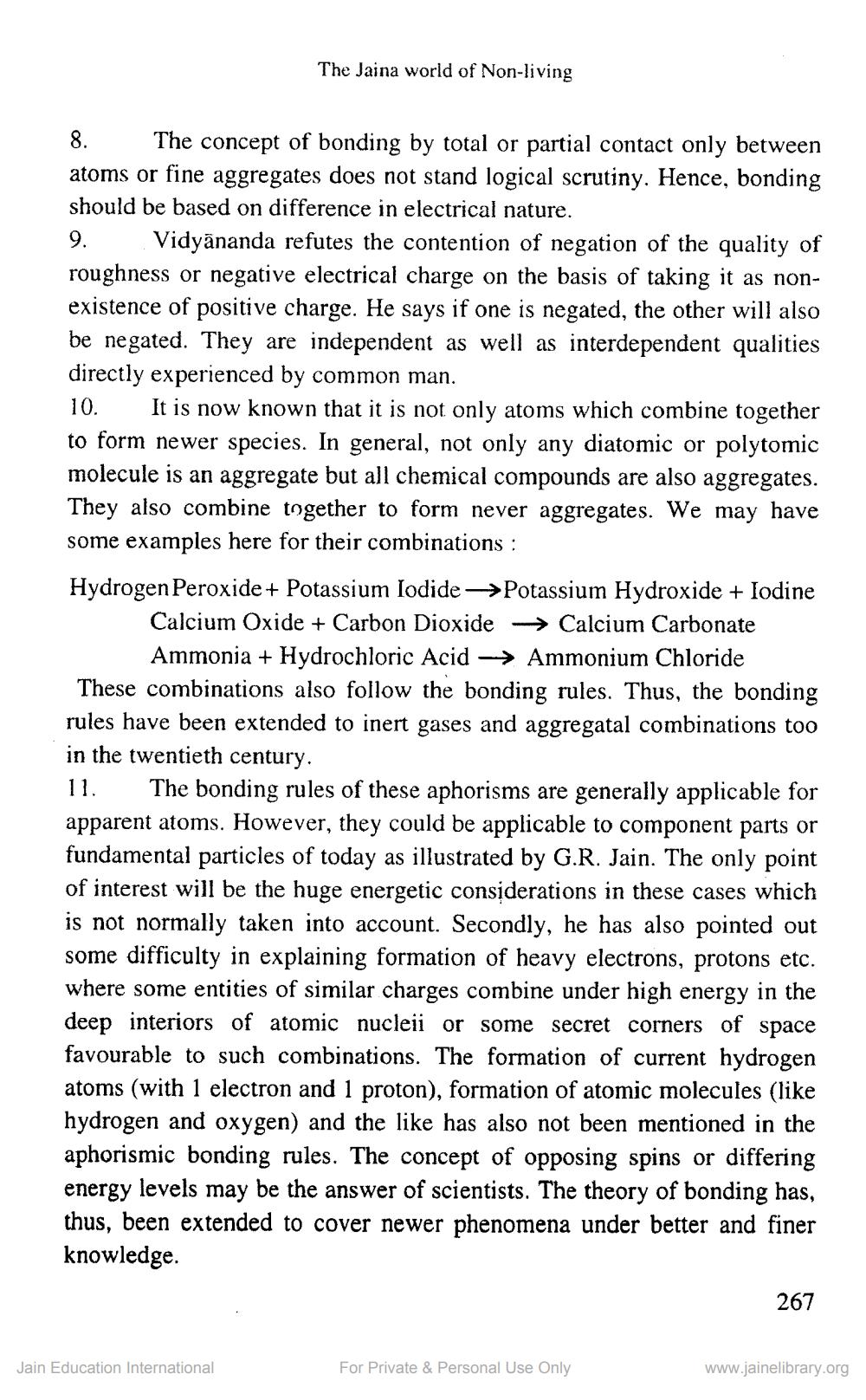________________
The Jaina world of Non-living
8. The concept of bonding by total or partial contact only between atoms or fine aggregates does not stand logical scrutiny. Hence, bonding should be based on difference in electrical nature. 9. Vidyananda refutes the contention of negation of the quality of roughness or negative electrical charge on the basis of taking it as nonexistence of positive charge. He says if one is negated, the other will also be negated. They are independent as well as interdependent qualities directly experienced by common man. 10. It is now known that it is not only atoms which combine together to form newer species. In general, not only any diatomic or polytomic molecule is an aggregate but all chemical compounds are also aggregates. They also combine together to form never aggregates. We may have some examples here for their combinations : Hydrogen Peroxide + Potassium lodide->Potassium Hydroxide + Iodine
Calcium Oxide + Carbon Dioxide → Calcium Carbonate
Ammonia + Hydrochloric Acid - Ammonium Chloride These combinations also follow the bonding rules. Thus, the bonding rules have been extended to inert gases and aggregatal combinations too in the twentieth century. 11. The bonding rules of these aphorisms are generally applicable for apparent atoms. However, they could be applicable to component parts or fundamental particles of today as illustrated by G.R. Jain. The only point of interest will be the huge energetic considerations in these cases which is not normally taken into account. Secondly, he has also pointed out some difficulty in explaining formation of heavy electrons, protons etc. where some entities of similar charges combine under high energy in the deep interiors of atomic nucleii or some secret corners of space favourable to such combinations. The formation of current hydrogen atoms (with 1 electron and 1 proton), formation of atomic molecules (like hydrogen and oxygen) and the like has also not been mentioned in the aphorismic bonding rules. The concept of opposing spins or differing energy levels may be the answer of scientists. The theory of bonding has, thus, been extended to cover newer phenomena under better and finer knowledge.
267
Jain Education International
For Private & Personal Use Only
www.jainelibrary.org




